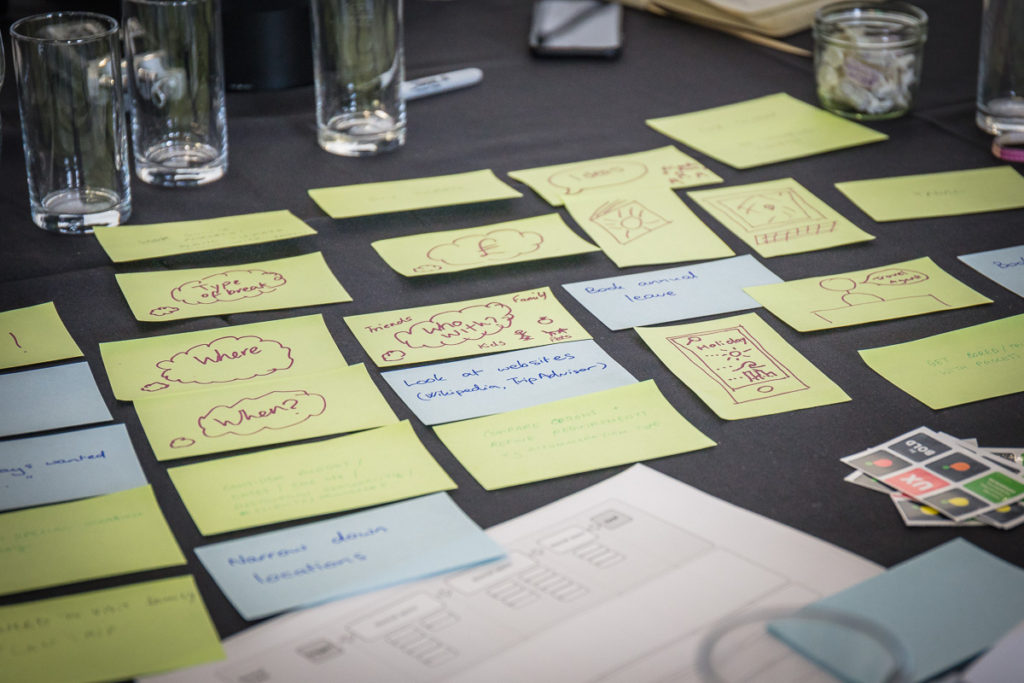

When users are frustrated, dropping out or giving negative feedback, often the problem is that their mental models don’t match the designed systems.
In a hands-on workshop, Mariana Morris shared some case studies and provided practical techniques for identifying and mapping out users’ mental models and match with actual user journeys to improve the user’s experience.
Mental models represents a person’s thought process around how something works – they are simply affinity diagrams of behaviours made from ethnographic data gathered from users. Mariana described a typical user’s mental model around an expected journey, which will start with a trigger and end when the user reaches their goal. Along the way there are can be friction points, where there is a mis-match between a user’s mental model and the steps required. Identifying these friction points will help us to remove barriers and we can even use our understanding of the users’ mental model to add some delight into a process.
We can use mental models to identify business opportunities and innovative solutions, and to fix UX issues. Done well, this process can increase customer retention and adoption, reduce costs of redesigning and increase product competitiveness.
Mariana quoted Jacob Nielsen, who observed that there is a great inertia in users’ mental models: the things people know well tends to stick, even if this is not helpful. To understand these models, we need to step back and get into the users’ mind, either using interviews or ethnographic research. You can then map out how users expect the system to work, using mental model mapping.
In her first exercise, Mariana asked participants to conduct a short user interview with themselves. Individually, participants used post-it notes to write down the steps they would take to plan a holiday, including the trigger, the behaviours (steps/actions) that would be required and the end goal. They then worked in groups to align these mental models.

Mariana shared a mental model diagram by Indi Young, which maps user tasks to features or content that a business might use to inform users at each stage of their journey. The tasks/behaviours are then grouped and named to create phases. In this way, mental models help find experience groupings, which can help you to match website content to user needs.
She moved on to describe a mental model template containing other useful layers, including emotions, pain points, business opportunities and solutions. Mariana stressed that you can map a different combination of layers against the mental model, depending on your project’s requirements.
In her second exercise, Mariana asked participants to use a mental model template to group similar behaviours, whilst keeping the order of the journey (creating an “affinity map”) then label the groups by themes (or “mental spaces”).
Mariana concluded by providing a few case studies showing how this can be applied, including using Trello so that members of the project team can focus on the mental model and the problems that occur at each stage, and how the method can be combined with user story mapping.
Mariana Morris is a User Experience Designer and founder of Fruto (fruto.studio), a UX design studio helping tech teams and startups improve the user experience and interface of their websites and mobile apps. Fruto also provides bespoke in-house UX training to digital teams (fruto.training).
Mariana has 15 years of industry experience, holds a Masters in Interactive Media and a Bachelors in Industrial Design (Visual Communication). She is a lecturer at the University of Reading, experienced trainer and public speaker. She co-founded the popular monthly event UX Oxford.